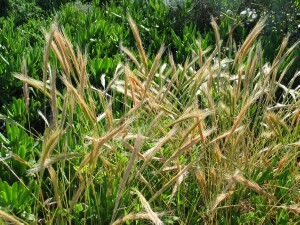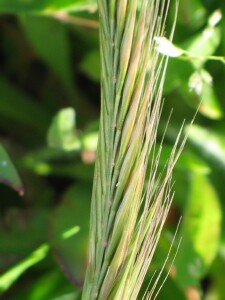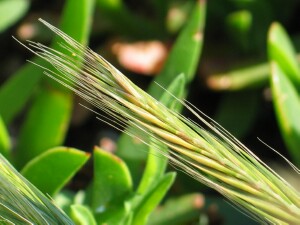Sand Fescue
Back | Salinity Indicator Plants Home | Common name home | Scientific name home | Photo Gallery | Glossary
| Sand Fescue photos | Family: Grass (Poaceae syn. Gramineae) |
| Scientific Name: | Vulpia fasciculata |  Flowering plants of Sand Fescue Photo: A J Brown | |||||
Other Common Name: | Dune Fescue | ||||||
Status: | Native to southern and western Europe. | ||||||
Plant Description: | Annual grass to 50 cm tall with stiff, erect or ascending stems (culms). Leaves rather stiff to 10 cm long and 3 mm wide. Flower-heads are stiffy erect, one-sided, panicles to 12 cm long, and only slightly exserted from the leaf, if at all. Spikelets are 10-18 mm long; the lower glume 0.1-2.5 mm and the upper 10-30 mm long (including an awn to 12 mm). Each spikelet has 2-5 fertile lower florets (8-18 mm long) and 3-6 sterile upper florets. Florets have an awn twice their length. | ||||||
Habitat: | Scattered along the coast on sand dunes but mainly around Port Phillip and Western Port Bays. Also found in the Mallee on sandy soils around salt lakes.
| ||||||
Comments: | Similar to the Silver Grasses; Squirrel-tail Fescue (Vulpia bromoides) and Rat’s-tail Fescue (V. myuros) but differs in its longer florets and awned upper glume and its generally stiffer flower-heads. | ||||||
 Sand Fescue flower-head showing one-sided spikelet arrangement Photo: A J Brown |  Maturing spikelets of Sand Fescue Photo: A J Brown |


